Table of Contents
TRANSCRIPT
Once you have kidney issues, you can’t just eat the same thing you’ve been eating. You should avoid anything refined. You must cut out sugar. And no more eating anything out of a box or a can or any quick junk foods.
The list of foods you can’t eat becomes very long, and some may surprise you as they are actually very nutritious.
This video reveals all foods you need to avoid with kidney disease. We also offer tips on how to still enjoy these foods or suggest delicious alternatives without affecting kidney health.
We highly recommend you to watch it all the way through because the food choices are going to be different depending on the type and stage of kidney disease you have.
For those who think your kidneys are totally healthy and there’s nothing to change, be cautious! 90% of people with kidney disease don’t even know they have it due to vague symptoms (1).
The problem with unhealthy kidneys is that they can’t filter certain things adequately anymore, and these are phosphorus, potassium, salt, and oxalates.
Depending on how weak your kidneys are, continuously consuming some foods high in these minerals can gradually lead to advanced kidney disease.
Now that these minerals are mentioned, we find it crucial to address a common misconception about kidney health. Some believe that if a kidney is damaged, it can’t filter certain substances like phosphorus, potassium, and salt.
They then assume these substances are harmful, and by reducing them, they can prevent kidney disease. However, this conclusion isn’t valid because minerals are essential for overall health, including kidney health.
Let me repeat that: A healthy kidney requires phosphorus, potassium, and salt regularly. However, if your kidneys are unhealthy, you may need to limit them.
As you can see, kidney disease is complex. That’s why understanding the condition of your kidneys is vital, and consulting your doctor for personalized advice is the best way to do so.
Plus, as many folks have no clue they’re even at risk of kidney disease, it’s crucial to take preventive steps. In the second part of the video, you can find some helpful tips to cleanse your kidneys and avoid any kidney disease.
In other words, you’ll be armed with all the information you need to keep your kidneys healthy.
Before we dive in, kindly note that all information you’ll find in this video is fact-checked, unbiased, and reviewed by qualified professionals.
Alright, it’s time to swing back to the foods that can destroy your kidneys!
Fruits Destroying Unhealthy Kidneys
1. Avocados
Avocados are creamy, delicious, and undoubtedly healthy. They are rich in monounsaturated fats, vitamins E, K, and C, and minerals (2). But if you have kidney issues, you might want to watch your avocado intake.
The main issue with avocados is they’re pretty high in potassium. Potassium is usually great for keeping our body in balance—it helps with our blood pressure, nerves, and muscles (3). Normally, our kidneys do a great job of managing extra potassium in our blood.
However, in folks with kidney issues, their kidneys can’t remove extra potassium effectively, causing too much blood potassium—a condition called hyperkalemia (3). If hyperkalemia is left unchecked, it can cause serious issues for the heart and muscles (4).
Guidelines for kidney disease often suggest limiting potassium, but the exact amount varies. So, it’s best for kidney patients to talk with their doctor to determine their ideal potassium intake (3). People on potassium-restricted diets usually aim for less than 2,000–3000 mg of potassium per day (5, 6, 7).
An average avocado contains about 975 milligrams of potassium, which is roughly 33–48% of this amount (3).
More concerning, despite being full of nutrients, avocados are also high in calories. One fruit can have over 300 calories (3). So, eating too many avocados can lead to weight gain, a risk factor for kidney disease.
Simply put, being overweight puts more strain on your kidneys, making them work harder to remove toxins. Plus, being overweight increases your risk of developing diabetes and high blood pressure, the two leading causes of kidney problems (8, 9).
After all, if you have kidney issues, it’s wise to watch how much avocado you eat. A good tip is to enjoy just a quarter of an avocado at a time. This helps you reduce potassium intake while still reaping its nutrient benefits.
You can also mix it with other low-potassium foods, which we will mention in the next section. Another trick is to peel, chop, and soak your avocado in water for two hours or boil it.
This trick can help slash potassium by up to 50% (10).
2. Banana
Bananas are well-known to help with weight loss, support heart health, provide natural energy, and regulate your digestive system. However, this superfood is also a rich source of potassium.
A healthy kidney balances potassium levels in the blood; however, people with chronic kidney disease (CKD), or kidney damage for at least three months (11), should limit their intake.
To give you an idea, the National Kidney Foundation in the US recommends a daily intake of 2,000 milligrams of potassium for people with CKD (12). A medium-sized banana, about 7 inches long, contains roughly 422 milligrams of potassium (13).
That’s 14–21% of the daily limit recommended if you have kidney disease (5, 6, 7). This may seem small, but people often eat multiple bananas at once due to their low calorie count and delightful flavor. Then, blood potassium can quickly add up, triggering hyperkalemia in kidney patients.
This can lead to weakness, numbness, fatigue, nausea, irregular heartbeats, and, in severe cases, cardiac arrest (4).
To manage your potassium intake, you can start by choosing smaller bananas and limiting yourself to just one a day.
Here’s another tip: boiling or soaking bananas in water briefly can reduce their potassium content (14). However, this method may also wash away other vitamins and minerals.
If you love the taste of bananas, consider blending them into smoothies or juices with fruits lower in potassium. Good options include apples, berries, cherries, grapes, pineapples, watermelon, pears, plums, and peaches (15).
They can help you maintain a balance between flavor and kidney health.
It’s important to note that other fruits like cantaloupe, apricots, honeydew, and dried fruits such as prunes or raisins are also high in potassium. Therefore, it’s wise to consume them in moderation for kidney health.
3. Apricots
Apricots, which are rich in potassium, are generally avoided in the later stages of kidney disease. One apricot contains 90.6 milligrams of potassium (16).
For kidney patients, regularly eating potassium-rich foods like apricots can raise blood potassium levels. This can lead to weakness, numbness, fatigue, and nausea. In severe cases, high blood potassium levels can even cause irregular heartbeats or cardiac arrest (4).
So, it’s smart to consume apricots in consultation with a dietitian.
Besides apricots, peaches and plums contain significant amounts of potassium. So, if you have kidney conditions, exercise caution with these fruits, especially in their dried form (17).
4. Oranges or orange juice
Oranges are healthy citrus fruits rich in vitamin C, antioxidants, and fiber, which are all great for our health (18). But oranges may not be good for people with kidney problems due to their high potassium levels, similar to avocados (3).
A medium orange, which is roughly the size of a small fist, contains around 237 mg of potassium (19). This amount may not seem significant, but eating more than one orange a day or drinking orange juice can easily exceed your daily potassium limit.
One cup of orange juice can have around 496 mg of potassium, which means drinking 500 ml (one pint) could contain 1240 mg (20).
As we discussed with avocados, regularly eating potassium-rich foods like oranges can worsen hyperkalemia in people with chronic kidney disease (3).
Hyperkalemia can make you feel weak, numbed, tired, and nauseous. In severe cases, hyperkalemia can even cause irregular heartbeats or cardiac arrest (4).
Moreover, eating too many oranges could increase your risk of kidney stones because oranges are high in oxalates (21). More details will be provided in the next section. Orange juice contains fewer oxalates than whole oranges, so you can still enjoy a glass occasionally (21).
For a safer choice, consider making juices from fruits with less oxalate, like berries, pears, cherries, apples, and grapes. The bonus is that these fruits also come with less potassium than oranges (15, 21).
5. Dried fruits
Dried fruits are tasty and seemingly nutrient-dense since they remove water content. However, they’re also rich in potassium, sugar, and calories, which might be bad for your kidneys.
According to the USDA, one cup of pitted uncooked prunes contains 1270 mg of potassium, which is enough to meet half the requirement of a day if you have kidney disease. Also, removing water content from fresh fruits may not be a good idea for your kidneys (22).
Drinking enough water is significant for kidney function. Dried fruits lose water during dehydration, so they don’t make you feel as full as fresh fruits.
Moreover, some dried fruits also contain added additives, salt and sugar to enhance flavor. These components will add more stress to your kidneys when they filter the blood. If you consume dried fruits daily, you may overwork your kidneys.
It’s also easy to overeat dried fruits since they’re small and convenient for snacking, which can lead to consuming more calories than you think.
Plus, the dehydration process removes much of the water from the fruit, so you may not feel as full as you would with fresh fruit. So, it’s best to stick with fresh fruits as a snack if you want to protect your kidneys.
Vegetables Destroying Unhealthy Kidneys
6. Spinach
Although leafy greens like spinach are praised for their health benefits, their potential risks are often overlooked, especially for kidney health.
The main issue here is spinach’s oxalate content. Oxalates can crystallize and form kidney stones, causing intense pain, blood in urine, nausea, vomiting, and kidney damage (23).
If your body takes too much oxalate in a short period of time—even one meal—you could die from this compound. There has been an instance where someone ate sorrel soup, which is packed with oxalate, and a few hours later, their kidneys shut down, and they passed away (24).
Even with a moderate daily intake, you can accumulate oxalates in your body, causing kidney stones, bladder stones, kidney nephropathy, joint issues, and affecting every organ, including the brain. They are also linked to conditions like interstitial cystitis (IC), also known as painful bladder syndrome.
A serving of 100 grams or half a cup of spinach can pack up to 2350 mg of oxalate, which is higher than many other leafy greens (21, 25, 26). In a study, scientists watched what nearly 240,000 people ate over many years.
They found that spinach made up over 40% of these people’s total oxalate intake (27). Other foods like cassava root, amaranth leaves, chard, beet leaves, star fruit, and rhubarb also contain high levels of oxalate, so it’s wise to avoid them if you have kidney concerns (25, 28).
Coming back to spinach, it is also high in potassium. 100 grams of uncooked spinach can contain up to 558 milligrams of potassium (29). As we mentioned in the “Avocados” section, in folks with kidney disease, their kidneys may struggle to filter potassium.
So, if a kidney patient eats too much spinach or potassium, they may suffer from hyperkalemia, a condition damaging their muscle and heart (3, 4).
Note that boiling spinach doesn’t reduce its potassium or oxalate content like it does with avocados (10, 30). So, while spinach is indeed a superfood, you should eat it in moderation to fit your state of health, whether you have kidney disease or not.
You can still include spinach in your diet by balancing it with other low-oxalate and low-potassium vegetables like kale, carrots, zucchini, lettuce, cabbage, broccoli, and cauliflower (15, 30).
7. Potatoes and sweet potatoes
Sweet potatoes are rich in essential vitamins, minerals, and amino acids, making them a superfood. But watch out for their high potassium content, which is bad for people with kidney disease.
According to the United States Department of Agriculture (USDA), a regular baked potato has around 610 mg of potassium, while a sweet potato of about 5 inches in length can have 438 mg (31, 32). However, unlike spinach, soaking potatoes in water before cooking can help reduce their potassium levels.
So, it’s wise to be moderate and soak your potatoes and sweet potatoes before cooking for the sake of your kidneys.
Moreover, popular snacks from potatoes, such as French fries or chips, are high in sodium or salt, putting more strain on your kidneys.
Snacking on them can easily push you over your daily sodium limit. Plus, potato chips usually offer little or no nutritional value as they are highly processed, so avoiding them all is best.
8. Tomatoes and tomato sauce
Tomatoes are an excellent source of fiber, vitamins, minerals, and antioxidants to fight cancer.
However, kidney patients should know that tomatoes have a high potassium content. Just 100g of ripe tomatoes can contain up to 237 milligrams of potassium (33). and tomato products such as sauce, gravy, and ketchup have
For people with kidney disease, their tomato consumption depends upon the stage of kidney damage. To find out what’s right for you, consult a registered dietitian or a qualified health professional.
9. Pickles and relish
Fermentation is a traditional method to extend the shelf life of fruits and vegetables. This method also enhances flavor and promotes the growth of probiotic bacteria for a healthy gut.
However, fermented foods, such as pickles and relish, are high in sodium. For example, one large pickle contains 1630 milligrams of sodium. This amount is more than half the recommended value for a kidney patient. Similarly, kimchi—a popular fermented food—contains 747 milligrams of sodium per cup (34).
Therefore, practicing moderation with fermented foods is important if you’re worried about your kidney health.
Drinks Destroying Unhealthy Kidneys
10. Soda
Consuming sugar in liquid form is way more harmful than in solid form. And soda is nothing but sugar! When your blood sugar is too high, your kidneys start to spill sugar into the urine.
If your kidneys are healthy, this usually isn’t a problem, but if you have diabetes, too much sugar can cause kidney damage (35).
Simply put, kidneys have tiny filters called nephrons. High blood sugar from diabetes can damage these filters and blood vessels, making the kidneys struggle (36).
Moreover, drinking sugary liquids, such as soda, is worse for you than consuming sugar in solid form.
People often go for diet soda, thinking it contains a lesser amount of sugar. But what they do not know is that drinking diet soda every day is linked to a 67% higher risk of developing type 2 diabetes (37). Diet soda still contains additives and artificial sweeteners that actually damage your kidneys.
More concerning, sodas often contain high phosphorus additives for flavor and a longer shelf life. Too much phosphorus can seriously harm your kidneys, and compared to natural sources, phosphorus from sodas is absorbed to a greater extent.
The National Kidney Foundation suggests sticking to 700mg of phosphorus per day for normal kidney function (38).
Now, to protect your kidneys, it’s best to cut back on soda intake.
11. Alcohol
Large amounts of alcohol consumption are strongly associated with kidney malfunction. Due to the toxicity of alcohol, it can cause inflammation and impede kidney function, contributing to toxic burdens in the body.
Alcohol may also increase the risk of low blood sugar and dehydration, which are bad for your kidneys.
If you want to keep your kidneys healthy, it’s important to cut back on alcohol and drink enough water. Your healthcare provider can assist you in deciding how much and how often it’s safe for you to drink based on your conditions.
Foods Destroying Unhealthy Kidneys
12. Almonds and some nuts
Nuts are rich in protein, healthy fats, and oils. However, the amount of potassium and phosphorus in nuts may harm people suffering from kidney disease.
Let’s take almonds for example. A one-ounce serving, which is about 23 almonds, provides 136 milligrams of phosphorus and 208 milligrams of potassium (39). Similarly, cashews contain 168 milligrams of phosphorus and 187 milligrams of potassium per ounce, which is around 16 to 18 cashews (40).
So, even healthy snacks like nuts need to be consumed in moderation if you have kidney health concerns.
Now, almonds are a bit riskier.
Eating almonds can increase the risk of kidney stones, especially for people with a history of kidney problems.
This is because almonds contain high levels of oxalates. 100 grams of almonds, which is equal to about three small handfuls, contain about 469 mg of oxalates (25, 30).
Normally, oxalates bind with calcium and leave our bodies in the stool. But if we consume too much oxalate and not enough calcium, oxalate can be absorbed into our blood. Then, it ends up in our urine.
If your kidneys don’t function well or your urine is too concentrated or acidic, the oxalates can bind with calcium in your kidney, forming crystals that grow into stones (41). These are known as calcium oxalate stones, which make up over 80% of kidney stones (42).
The quick buildup of oxalate stones in the kidneys is called acute oxalate nephropathy. This condition can damage the cells of kidney tubules, resulting in acute kidney failure.
Research has found cases of oxalate nephropathy linked to peanuts, which have about 187.0 mg of oxalates per 100 grams. Almonds have 2.5 times more oxalates than peanuts (25, 43).
So, should you avoid almonds altogether? Not necessarily, but it’s a good idea to enjoy them in moderation—just one or two handfuls a day. Also, cashews, peanuts, pistachios, and walnuts are high in oxalates, although in smaller amounts compared to almonds.
So, it’s best to practice moderation with them. For detailed guidance, it’s always best to consult with your doctor (25, 30).
13. Cocoa
Cocoa offers benefits for mood, brain, and heart health and may even assist with diabetes (44). However, kidney patients should notice that 100 mg cocoa powder contains 500–900 mg of oxalates, which is very high (24, 25).
Cocoa is also high in phosphorus, which is not good for kidney patients. High phosphorus levels can lead to dangerous calcium deposits in blood vessels, lungs, eyes, and heart.
Over time, this can cause hardening of the arteries, increasing the risk of heart attack, stroke, or death (45, 46).
Cocoa-based treats like chocolate, chocolate milk, and chocolate syrups are also rich in oxalates, phosphorus, and potassium. These products often come with added salt and sugar, which can strain your kidneys even more, like we discussed earlier (15, 47).
Some people think that the caffeine content in cocoa beans makes you urinate more and may lead to dehydration or calcium loss, raising your risk of kidney stones. Yet, studies show the opposite (48).
If you want to strike a balance while enjoying your cup of chocolate milk, moderation is key. You can opt for drinks with lower oxalate content, such as juices, milk, or simply water.
You can also consider using carob powder as a substitute for cocoa powder for kidney health. Carob generally contains lower levels of oxalates than cocoa, and it has the same flavor. Plus, compared to cocoa, carob has nine times less phosphorus and three times less potassium (49).
However, if you are on a low oxalate diet, you will most likely have to leave cocoa—and other high oxalate foods behind until your body heals.
14. Rice
Rice is the dependable sidekick to countless meals worldwide, but guess what? That innocent plate of rice might carry a toxic surprise! Simply put, rice is high in arsenic, the heavy metal that directly damages your kidneys (50).
Arsenic poisoning can lead to problems like acute renal failure and chronic renal insufficiency (51). In raw rice, the more harmful form of arsenic, called inorganic arsenic, is about 0.1–0.4 mg/kg.
For other grains like wheat and barley, the inorganic arsenic is often undetectable, and their total arsenic content is only 0.03 to 0.08 mg/kg (52).
Rice also tends to absorb more cadmium and other heavy metals than other crops (50). Does it mean that you should avoid all rice? Not necessarily. You can still enjoy it in moderation because a healthy diet is about balance. It’s fine to have rice occasionally, but it’s best not to have it too often, especially for infants and children.
They can get up to three times more arsenic from rice than adults. So, even low levels of exposure could affect children’s brain development, intelligence, and memory (53). Now, if you’re considering alternatives to brown rice, try these low-arsenic options: quinoa, barley, couscous, buckwheat, millet, farro, and sorghum.
15. Butter
Butter is a dairy product made from milk or cream’s fat and protein components. Thus, this creamy treat is composed of saturated fat and cholesterol. These compounds are linked to high blood pressure and plaque formation, which can strain your kidney’s blood vessels and impair kidney function over time.
If it was not harmful enough, we have salted butter, too! 100 grams of salted butter contains about 643 milligrams of salt (54). And that is a lot. A high-sodium diet will increase blood pressure, which may result in kidney damage in the long run.
Moreover, store-bought butter is often heavily processed to improve flavor and extend shelf life. This process removes vital nutrients like calcium from butter, resulting in minimal nutritional benefits. So, consider opting for organic, unsalted butter to support your kidney health, and remember, moderation is key!
16. Pretzels and crackers
Popular snacks like pretzels offer little if any nutritional value while being high in added sodium or salt. It’s normal for anyone to exceed their daily allowance value for sodium intake while snacking.
According to the National Kidney Foundation, a healthy diet should contain less than 2300 milligrams or 2.3 grams of sodium daily, equal to half a teaspoon (55). High sodium intake will increase blood pressure, which may result in kidney stones and kidney damage in the long run (56). So, checking the snack labels to avoid excess salt in your diet is always wise.
17. Canned and frozen foods
Canned foods, such as soups, vegetables, meats, and seafood, are popular because they are convenient and easy to prepare. However, the canning technology requires salt as a preservative to extend the shelf life. Hence, it results in high sodium content that harms your kidneys (57).
Keep in mind that frozen items like vegetables or fish often have extra sodium added. Even a single huge serving of these easy-to-use products can surpass your daily sodium limit of 2.3 grams (55, 57). If these heavily processed foods are staples in your family now, consider switching to fresh options.
18. Processed meat
Any meat such as flesh, fat, muscle, or offal can be cured, processed, smoked, or fermented to improve flavor and extend shelf life. Most processed meat, such as hot dogs, sausages, beef jerky, corned beef, and pepperoni, can be high in sodium and phosphorus. The exact amount depends on their additives and processing methods.
The problem is that excess salt and phosphorus intake can seriously harm your kidneys. The National Kidney Foundation recommends eating no more than 700 milligrams of phosphorus a day for normal kidney function (38). Moreover, processed meats are linked to cancer and other chronic diseases, so it’s best to avoid them all.
19. Legumes
Legumes, including beans and lentils, are great sources of plant-based protein, fiber, vitamins, and various minerals. However, this superfood needs to be eaten with caution for people with kidney concerns.
Legumes are high in potassium and phosphorus. For example, one cup of boiled or cooked pinto beans contains 251 milligrams of phosphorus and 746 milligrams of potassium (58). When your kidney function declines, phosphorus and potassium can build up in your body, causing damage to your bones, blood vessels, and other organs.
If you have kidney concerns, be cautious when consuming legumes, and cook them thoroughly to reduce potential side effects.
20. Dairy
Dairy products such as cheese, milk, and ice creams are excellent sources of protein, calcium, and vitamin D. However, they are also rich in phosphorus and potassium. For example, one cup of milk with 2% milkfat can contain 252 milligrams of phosphorus and 390 milligrams of potassium (59). This amount is too much for unhealthy kidneys.
Some dairy products also contain saturated fats, which can stress your kidneys more. So, although dairy is okay in moderation, especially in a balanced diet, it’s wise to limit it if you have kidney issues.
21. Whole grains, especially whole wheat bread
In general, grains are composed of three layers. Whole grains contain the outermost part, or bran, a rich source of phosphorus and potassium.
A cup of brown rice can contain around 208 milligrams and 174 milligrams of phosphorus and potassium, respectively (60). In contrast, a cup of white rice carries about 69 milligrams of phosphorus and 54 milligrams of potassium. This means white rice contains only about one-third the amount of phosphorus and potassium found in brown rice (61). So, if you have moderate to severe kidney disease, choosing refined grains might be better than bran cereals and brown rice. This is especially true for the next food item on our list: whole wheat bread.
22. Whole Wheat Bread
Lately, many folks believe that whole-wheat bread is healthier than plain white bread. Whole wheat bread stands out for its vitamins, minerals, and fiber. But, for kidney health, the preference should lean towards white bread.
This preference arises from the elevated levels of phosphorus and potassium in whole wheat bread. As we explained in previous parts, high-potassium foods are not good for kidney patients. Phosphorus is another concern.
Actually, for people with healthy kidneys, phosphorus isn’t usually a concern because the kidneys filter out excess phosphorus from our blood. But for those with kidney disease, it’s a different story. Their kidneys can’t filter phosphorus effectively, leading to high levels in the blood. This can pull calcium from your body, making your bones thin and weak over time. Then, you might have symptoms like itchy skin, muscle cramps, bone and joint pain (45).
A single slice, or just 28 grams, of whole wheat bread can contain around 67 milligrams of phosphorus and 81 milligrams of potassium. It seems like it’s only a little, but most people don’t stop at just one slice. If you’re crafting a sandwich, that’s double the amount. In contrast, a regular slice of white bread carries about 64 milligrams of both phosphorus and potassium (62, 63).
Other foods that are high in phosphorus include dairy, whole-grain bread, bran cereals, oatmeal, nuts, and sunflower seeds (45, 46). Since there’s no set daily potassium intake for people with kidney disease, it’s important to consult your doctor or dietitian to find the right amount of these foods for you.
It’s not just about phosphorus that makes whole wheat bread a potential problem for your kidney health. Bread can worsen the effects of kidney diseases like anemia, where you have a low red blood cell count. Simply put, kidney disease affects the absorption of important nutrients like iron, which are crucial for making red blood cells (64). Whole wheat bread contains phytates that bind to and reduce further iron absorption (65). Therefore, whole wheat bread can worsen anemia in people with kidney diseases.
Another concern is that commercially produced bread contains added salt and sugar to enhance flavor and texture, which isn’t good for your kidneys (62). A diet high in salt and sugar can raise blood pressure, a major risk factor for kidney disease. High blood pressure puts extra strain on the kidneys. Over time, this strain can lead to kidney damage (66).
And there you have it, folks, our list of 22 common foods that can destroy unhealthy kidneys!
It’s important to stress that while these foods can be bad for an unhealthy kidney, most of them have their place in a balanced, nutritious diet. So, it’s all about balance, variety, and moderation, especially for people with kidney problems.
All foods have good and bad elements, so making smart food choices can greatly support your kidney health and overall well-being. Enjoy your meals in sensible portions and live a happy, worry-free life!
Our list of 22 foods that can destroy your kidneys should be carefully considered based on your individual needs and condition. It’s best to develop a personalized diet plan with the guidance of a qualified healthcare professional or dietician. Remember that your daily limits are oxalate, sodium, potassium, and phosphorus.
Now, we will share some more tips on how to create a good diet for your kidneys (67).
Kidney-friendly Diet
First, try to maintain a sufficient protein meal throughout the day. High-protein foods include meat, fish, poultry, fresh pork, and eggs. Another helpful tip is to drink coffee, tea, green tea, water, or any other drinks at room temperature. Staying hydrated will also help you take better care of your kidneys.
When shopping, read labels to check for oxalate, sodium, potassium, and phosphorus content in foods. Here is a simple tip: Processed and packed foods are generally less healthy for your kidneys. Cooking at home gives you more control. You can add flavor to your meals with herbs or spices instead of unhealthy additives or sugar. Plus, cooking at home lets you manage your salt intake better.
After checking out these tips, we’ve got some extra tricks to give your kidneys a good cleanse. Right now, you can protect your kidneys just by picking the right beverages to drink. What do health-conscious people know that you don’t?
We will include some of them now, in a guide on natural fruit juices for kidney health and detoxification.
But before that, let’s make sure we’re on the same page about what “cleanse” means, as this has been quite a controversial topic among the healthcare community (68).
Some argue that our kidneys naturally cleanse our bodies, so we don’t need to do more. But when we eat or live unhealthily, our kidneys can get overloaded with toxins like heavy metals or free radicals, causing painful kidney disease (69, 70).
We’ve explained this in detail in our previous video, so check it out for more info. But just remember, we need to give our kidneys extra support to remove any leftover waste that hasn’t been flushed out. In simpler terms, we can and do need to cleanse our kidneys of extra toxins.
But forget about any “3-day routines” or fancy supplements for kidney cleanse. We’ll explain why later, but for now, let’s keep it simple and natural.
The best thing you can do for your kidneys is to eat more foods rich in antioxidants. Antioxidants help cleanse your kidneys from harmful molecules called free radicals, the major causes of kidney disease (71).
So, boosting your antioxidant intake is crucial for supporting kidney cleanse. Luckily, antioxidants are found in many natural juices, and we’re here to help you discover the top choices!
From understanding these active compounds to learning how to prepare and savor kidney-friendly drinks, we’ve got all the insights you need.
10 Best Drinks to Cleanse Your Kidneys Fast
10. Apple juice
Apples are not just delicious; they’re packed with nutrients and versatile in production, making apple juice a popular choice. But did you know that apple juice could help cleanse your kidneys? With its high water content, apple juice helps flush out toxins and keeps you hydrated.
Moreover, apples and apple juice are packed with compounds like phytochemicals, vitamin C, and dietary fibers like pectin. The fiber found in apples promotes healthy digestion, reducing the strain on your kidneys. Now, phytochemicals, especially polyphenols, have antioxidant properties that fight off free radicals that can harm your cells (72, 73).
So, next time you enjoy some apple juice, you’re not just getting a tasty drink – you’re also giving your kidneys a boost to stay healthy and strong!
In a clinical study, researchers found that drinking apple juice might lower the risk of developing calcium oxalate kidney stones. In this study, nine healthy women sipped 2 to 4 cups of apple juice daily for just five days. And what was the outcome? Their urine samples showed a decreased likelihood of forming certain types of kidney stones (74).
But before you start sipping apple juice by the gallon, remember to consume it in moderation, especially if you have kidney disease. Some store-bought apple juice has a high level of sugar, so it may be a no-no for people with diabetes.
Additionally, when it comes to kidney health, opt for apple cider vinegar (ACV) – a vinegar drink made from fermented apple, yeast, and sugar. ACV can help prevent oxidative stress, balance blood sugar levels, and even dissolve kidney stones (75).
Choose a high-quality and organic brand to get the most out of your ACV. The good thing is that even the best ACV won’t cost too much! The recommended ACV amount is 1–2 tablespoons (15–30 ml) of ACV mixed in water every day to promote health, including kidney health (76).
It’s best to spread this out throughout the day. Starting with a small amount is a good idea to see how your body tolerates it.
9. Cranberry juice
Cranberries grow on evergreen shrubs in North America. These dark red fruits contain great kidney-friendly compounds, such as salicylic and quinic acids (77).
Moreover, cranberry juice may aid in kidney cleansing by supporting the urinary tract, fighting urinary tract infections (UTIs), and potentially preventing kidney stone formation. Simply put, cranberry juice is packed with antioxidants that help prevent bacteria from sticking to the urinary tract.
This property can help reduce inflammation in the body and the risk of developing UTIs (78). One of the key active compounds in cranberry juice, which protects against urinary tract infections, is procyanidins (PCs). These PCs are powerful antioxidants with anti-inflammatory, anticancer, and antimicrobial properties (79). They play a crucial role in defending against oxidative stress and supporting overall health.
Additionally, cranberry juice has been shown to lower cholesterol and blood pressure, which directly benefits kidney health as kidneys filter blood (80).
It’s important to note that while cranberry juice may prevent some types of kidney stones, such as brushite stones, it may increase the risk of others, namely oxalate and uric acid stone formation (81). So, remember to drink it moderately.
8. Beet juice
Beet juice is the vibrant and delicious juice made by squeezing beetroots, the deep red root veggies you see at the grocery store. Beet juice is packed with essential nutrients and compounds that support kidney health (82, 83). One of these amazing compounds is inorganic nitrate, which has been shown to help regulate blood pressure and may also benefit kidney function.
In a clinical study, researchers investigated the effects of beetroot juice on blood pressure in 60 adults with kidney disease (84). The study found that beet juice could reduce blood pressure by improving blood vessel function. This study provides strong evidence for the potential benefits of beet juice in supporting kidney health, especially for people with hypertension and kidney disease.
So, next time you’re enjoying a meal, why not pair some beets with cottage cheese, crumble feta cheese onto a spinach salad, or even try a cheese sandwich with a side of beet juice? It’s a delicious way to give your kidneys the support they need!
7. Lemon juice
Lemon juice, with its satisfied tangy citrus flavor, is known as a natural kidney cleanse. Simply put, lemon juice is packed with citric acid and hydroxycitrate (HCA), which works wonders in preventing kidney stones from forming (85, 86). Citric acid and HCA stop minerals from sticking to existing stones and prevent new ones from crystallizing (87).
For example, citrate joins with calcium to prevent stone formation. Research suggests that consuming half a cup of lemon juice concentrate mixed with water daily, or the juice of two lemons, can raise urine citrate levels and potentially lower the risk of kidney stones (86).
In a study involving 203 patients with past calcium oxalate kidney stones, half were given lemon juice twice daily. After two years, the lemon juice group had fewer stone recurrences than those who didn’t take it (88). Note that adding lemon juice to your diet might help prevent kidney stone recurrence, but consistency is key for effectiveness.
So, once you start, stick to lemon juice every day to stay healthy and stone-free. Just remember, moderation is key to avoiding eroding your teeth, as lemon juice is highly acidic (89)!
6. Lime juice
Lime juice, an extract from the lime fruit, is not just a flavor enhancer; it also contributes to kidney health (90). Rich in citrate, lime juice plays a crucial role in preventing kidney stones by inhibiting urinary crystallization and hindering the formation of kidney stones, especially calcium-based ones.
Simply put, lime juice effectively binds to calcium oxalate crystals by increasing citrate levels in urine, preventing their growth and aggregation. Besides citrate, lime juice is high in antioxidants like ascorbic acid, polyphenols, and flavonoids, which contribute to overall kidney health by reducing oxidative stress (91).
Studies, including one published in the Cochrane Database System Review, have demonstrated the effectiveness of citrate in reducing the size of kidney stones, further supporting lime juice’s role in kidney stone treatment and prevention (92).
Limeade offers a delicious way to consume lime juice, blending its refreshing tanginess with water and a sweetener of choice. Lime juice can also be incorporated into various dishes as a flavoring agent, adding a citrusy touch to salads, marinades, dressings, and seafood dishes.
When it comes to the amount, incorporating one medium lime a day into your diet can provide a significant boost of vitamin C and other essential nutrients for your kidneys (93).
5. Celery juice
Celery, a crunchy and nutritious vegetable, is often praised for its antioxidant and anti-inflammatory properties, making it a popular choice for health-conscious individuals (94).
You can prepare your own celery juice by cutting celery stalks into small pieces and then blending them with water until smooth. Use a strainer to extract the celery juice and enjoy immediately to get maximum nutrients. To have a variety of tastes, you can add ginger, cucumber, fresh mint, or lemon juice.
But what makes celery juice so special? Celery lowers blood pressure and cholesterol, which could indirectly help your kidneys.
Celery extracts contain a specific flavonoid called Apigenin, which might protect against kidney damage (95). The cytoprotective properties, which are celery extract’s ability to protect cells from damage, suggest that it could also benefit kidney health.
Yet, despite celery juice’s popularity, there is still limited human research to support the idea that celery juice aids in kidney cleansing (96). Still, incorporating celery juice into your kidney-friendly diet gives your kidneys a low-potassium, nutrient-rich vegetable.
4. Cucumber juice
Cucumbers belong to the Cucurbitaceae family, which includes melons, squash, and pumpkins. They have been a staple in Indian traditional medicine for ages (97, 98). With over 96% water content and low calories (99), cucumbers support your kidney function by aiding in toxin filtration.
Simply put, cucumbers are packed with an array of nutrients like vitamins, minerals, and antioxidants. These nutrients help flush out toxins, protect your cells from damage, and promote a healthy internal environment (100).
Moreover, with its high water content, cucumber juice acts as a virtual broom, sweeping waste and toxins out of your body (99). Plus, the seeds from cucumber also have a cooling effect and can help prevent constipation, ensuring your gut and kidneys stay happy and healthy (97, 99).
But that’s not all – cucumber juice is also a kidney stone fighter! Regular consumption is believed to help dissolve kidney stones, thanks to its water-rich composition and fiber content (98, 101).
While scientific research on cucumber juice’s direct impact on kidney health is still limited, its hydrating and anti-inflammatory properties make it a promising addition to any kidney-friendly diet (102). Just remember, it’s not a replacement for medical advice or treatment, especially if you have kidney issues.
3. Parsley juice
Parsley, a member of the Apiaceae family, is a nutrient-packed plant with antioxidants and other beneficial compounds. With its rich nutrient profile, parsley has been hailed as a potent healer since ancient times and has been used medicinally in many European, Mediterranean, and Asian countries (103).
More specifically, parsley is a medicinal plant used widely in urolithiasis or the formation of stones in the urinary tract (103). Research on animals also suggests that parsley extract may boost urine volume and reduce urinary calcium levels, potentially hindering the formation of kidney stones (103). Plus, its natural diuretic properties may aid in kidney stone prevention and overall kidney health (103, 104).
Moreover, parsley juice is a kidney-friendly elixir as it is loaded with antioxidants such as carotenoids, coumarin, and tannins, along with vitamins and minerals like iron (105). These nutrients support kidney function and help flush out toxins, keeping your urinary system clean and clear.
While scientific evidence on parsley juice’s direct impact on kidney health is still evolving, its diuretic properties and nutrient content hold promise for kidney stone prevention and overall renal well-being.
2. Watermelon juice
Watermelon, scientifically known as Citrullus lanatus, thrives in warm temperate zones and gracing markets with its juicy flesh.
Do you know that watermelon can help improve kidney health? This juicy fruit has natural compounds and mild diuretic properties that gently propel your kidneys into action. From vitamins A, C, and K to minerals like iron, watermelon is filled with essential nutrients.
Plus, its antioxidants like citrulline, lycopene, beta-carotene, lutein, and zeaxanthin work tirelessly to combat harmful free radicals and shield your kidney cells from damage (106). Specifically, citrulline stimulates arginine and nitric oxide production, relaxing and dilating your blood vessels. This helps ensure smooth blood flow, or an adequate supply of oxygen and nutrients, to your kidneys.
Prior research on rats has shown that watermelon rind can shield the liver and kidneys from toxicity by enhancing antioxidant defenses (107).
So, next time you make watermelon juice, remember to include the rind. With each sip of watermelon juice, you’re not just indulging in refreshment; you’re nurturing your kidneys and body from the inside out.
1. Pineapple juice
Pineapple is a tropical fruit whose juice is derived from pineapple fruit, stem, and root. Its benefit is fueled by its enzyme, bromelain. Here’s a fun fact: Bromelain can soften meat, so you can use it nicely as a marinade (108). Plus, this enzyme helps reduce inflammation and pain, supports heart health, and boosts the immune system with its high vitamin C content, all benefits your kidneys.
Also, pineapple combats free radicals and aids kidney health due to its low potassium levels and essential nutrients like vitamin C, manganese, and fiber (109). Pineapple’s anti-inflammatory properties make it a kidney-cleansing fruit, easing swelling and inflammation with every sip.
Simply put, the enzyme bromelain selectively targets proinflammatory prostaglandins, easing inflammation in the kidneys and promoting overall wellness.
But it doesn’t end there. Clinical studies have underscored bromelain’s effectiveness in managing pain and inflammation, offering tangible relief (110, 111).
Stick to recommended pineapple serving sizes, like a 1/2 cup of fruit or 4 ounces of juice per day, to reap the rewards without overindulging. Now, have yourself a glass of pineapple juice for a taste of the tropics. Your kidneys will thank you for it (112)!
And there you have it, folks, our list of 10 best drinks to enjoy if you want to detox your kidneys. It’s important to stress that while these drinks are all great for the kidneys, all drinks have good and bad elements. So, don’t just stick to one of them. It’s all about balance, variety, and moderation.
Now, there are some more things you should know about kidney cleansing.
Kidney Cleanse: Precautions
Kidney cleansing, popularly referred to as kidney detox, is a practice hailed for its potential to purify the body and enhance kidney health. While kidney cleansing may seem like a promising method, the scientific evidence backing its effectiveness remains scarce.
More concerning is that while kidney cleansing might be safe for people with healthy kidneys, it can mean trouble for those with impaired kidney function. Bowel cleansing, sometimes used in kidney cleansing, can cause severe hyperphosphatemia, or high blood phosphate (113) in patients with impaired kidney function. Note that hyperphosphatemia can take one’s life (68, 70).
Also, extreme measures for kidney cleanse, like fasting or drastic calorie restriction, would result in pounding headaches to debilitating fatigue. This is because prolonged fasting periods can cause electrolyte imbalances and dehydration, and the risks shouldn’t be taken lightly.
So, it’s vital to take these necessary precautions before engaging in any act of kidney cleaning. Consult your healthcare provider to offer personalized guidance based on your individual health needs.
Some people may be at a greater risk for complications, such as electrolyte imbalances or dehydration, and personalized guidance from your doctor can help ensure safety and efficacy. Your doctor can also help you make informed decisions about dietary changes.
A diet that can greatly improve your kidney health is the renal diet. It’s a meal plan specifically designed to promote kidney wellness, especially if you have pre-existing kidney issues. This diet focuses on keeping protein, sodium, potassium, and phosphorus levels low.
Simply put, when your kidneys aren’t working properly, these nutrients can build up in your body (114, 115).
Another kidney-friendly option is the Dietary Approaches to Stop Hypertension (DASH) diet, which is made up of lots of fruits, veggies, whole grains, and lean proteins. This special meal plan is designed to lower blood pressure (116, 117).
Since high blood pressure is a common risk factor for kidney issues, the National Kidney Foundation suggests the DASH diet to slow the development of kidney disease. Again, embracing moderation and mindfulness are the keys to safe consumption. With proper hydration and a balanced diet, the journey to your kidney health begins.
Summary
By following these simple tips and listening to your body’s cues, you can safely and responsibly apply natural methods for kidney cleansing, such as drinking certain fruit juices, as we suggested. From hydrating apple juice to antioxidant-rich cranberry juice, each drink offers a unique blend of nutrients to support our kidneys. While these fruit juices may offer potential benefits, consulting with a healthcare professional before making any significant dietary changes is crucial if you have kidney concerns.
By following safety precautions as we mentioned some minutes ago, your kidneys will thank you! Note that taking care of your kidneys isn’t just about eating the right foods; it’s also about avoiding the wrong ones. If you have kidney disease, don’t forget to avoid the 22 foods that can destroy your kidneys.
Source
- Quick kidney disease facts and stats
- Avocados, raw, all commercial varieties
- Potassium
- Hyperkalemia (high potassium)
- Dietary potassium liberalization with fruit and vegetables versus potassium restriction in people with chronic kidney disease (DK-Lib CKD): a clinical trial protocol
- Patient education: Low-potassium diet (Beyond the Basics)
- Dietary Potassium Intake and Risk of Chronic Kidney Disease Progression in Predialysis Patients with Chronic Kidney Disease: A Systematic Review
- Chronic kidney disease
- Health Effects of Overweight and Obesity
- Potassium Bioaccessibility in Uncooked and Cooked Plant Foods: Results from a Static In Vitro Digestion Methodology
- Chronic Kidney Disease
- Dietary Approach to Recurrent or Chronic Hyperkalaemia in Patients with Decreased Kidney Function
- Bananas, raw
- Overnight soaking or boiling of “Matooke” to reduce potassium content for patients with chronic kidney disease: does it really work?
- Potassium in Your CKD Diet
- Apricots, raw
- Eating Right for Chronic Kidney Disease
- Oranges, raw, Florida
- Oranges, raw, all commercial varieties
- Orange juice, raw (Includes foods for USDA’s Food Distribution Program)
- Oxalate in Foods: Extraction Conditions, Analytical Methods, Occurrence, and Health Implications
- Plums, dried (prunes), uncooked
- Kidney Stones
- FATAL OXALIC ACID POISONING FROM SORREL SOUP
- Oxalate Content of Foods
- Oxalate content of food: a tangled web
- Oxalate intake and the risk for nephrolithiasis
- Swiss Chard
- Spinach, raw
- Oxalate Content of Foods.xls – Compatibility Mode
- Potatoes, baked
- Sweet potato, raw, unprepared (Includes foods for USDA’s Food Distribution Program)
- Tomatoes, red, ripe, raw, year round average
- Kimchi
- Sugar and Your Kidneys
- Diabetes and Chronic Kidney Disease
- Diet Soda Intake and Risk of Incident Metabolic Syndrome and Type 2 Diabetes in the Multi-Ethnic Study of Atherosclerosis (MESA)*
- National Kidney Foundation
- Nuts, almonds
- Nuts, cashew nuts, raw
- Kidney Stones
- Kidney stones
- Peanut-induced acute oxalate nephropathy with acute kidney injury
- Cocoa and Chocolate in Human Health and Disease
- High phosphorus (hyperphosphatemia)
- Phosphorus and Your Diet
- hronic kidney disease
- Caffeine intake and the risk of kidney stones
- Cocoa vs. Carob
- Toxic environmental exposures and kidney health in children
- What are the Physiologic Effects of Arsenic Exposure?
- Arsenic in Rice
- Arsenic in rice: What is and isn’t safe for adults and children
- Butter, salted
- Sodium and Your CKD Diet: How to Spice Up Your Cooking
- DASH Eating Plan
- Canned, Boxed or Frozen: Sodium Still Matters
- Beans, pinto, mature seeds, cooked, boiled, without salt
- Milk, reduced fat, fluid, 2% milkfat, with added vitamin A and vitamin D
- Rice, brown, long-grain, cooked (Includes foods for USDA’s Food Distribution Program)
- Rice, white, medium-grain, cooked, unenriched
- Bread, whole-wheat, commercially prepared
- Bread, white wheat
- Anemia and Chronic Kidney Disease
- Mineral and Phytic Acid Content as Well as Phytase Activity in Flours and Breads Made from Different Wheat Species
- Disorders of Sodium Balance
- Eating Right for Chronic Kidney Disease
- “Detoxes” and “Cleanses”: What You Need To Know
- 10 Common Habits That May Harm Your Kidneys
- The Kidney Dysfunction Epidemic, Part 1: Causes
- Eat Your Broccoli: Oxidative Stress, NRF2, and Sulforaphane in Chronic Kidney Disease
- Health Benefits of Apple Juice Consumption: A Review of Interventional Trials on Humans
- Application of High-Pressure Homogenization for Apple Juice: An Assessment of Quality Attributes and Polyphenol Bioaccessibility
- Influence of grapefruit-, orange- and apple-juice consumption on urinary variables and risk of crystallization
- 8 Easy Ways to Cleanse Your Kidneys
- Health Benefits of Apple Cider Vinegar and Other Common Vinegars: A Review
- Chapter 6: Cranberry
- A systematic review of the evidence for cranberries and blueberries in UTI prevention
- Procyanidins from Cranberry Press Residues—Extraction Optimization, Purification and Characterization
- Is Cranberry Juice Good for Your Kidneys?
- Effect of cranberry juice consumption on urinary stone risk factors
- Red Beet (Beta vulgaris) Impact on Human Health
- Functional properties of beetroot (Beta vulgaris) in management of cardio-metabolic diseases
- Efficacy of beetroot juice on reducing blood pressure in hypertensive adults with autosomal dominant polycystic kidney disease (BEET-PKD): study protocol for a double-blind, randomised, placebo-controlled trial
- Fresh lemon juice supplementation for the prevention of recurrent stones in calcium oxalate nephrolithiasis: A pragmatic, prospective, randomised, open, blinded endpoint (PROBE) trial
- How to pass a kidney stone & 5 tips to prevent them
- Hydroxycitric acid inhibits kidney stone through crystallization regulation and reduction of hyperoxalate-induced lipotoxicity
- Fresh lemon juice supplementation for the prevention of recurrent stones in calcium oxalate nephrolithiasis: A pragmatic, prospective, randomised, open, blinded endpoint (PROBE) trial
- Particular dental erosion
- Lime juice to prevent kidney stones
- Lime juice as a dietary alternative to mist potassium citrate for urine alkalinisation: A prospective, cross-over clinical trial
- Citrate salts for preventing and treating calcium containing kidney stones in adults
- Lime juice, raw
- Comprehensive Quality and Bioactive Constituent Analysis of Celery Juice Made from Different Cultivars
- Apigenin Ameliorates Hyperuricemia and Renal Injury through Regulation of Uric Acid Metabolism and JAK2/STAT3 Signaling Pathway
- A Review of the Antioxidant Activity of Celery (Apium graveolens L)
- Phytochemical and therapeutic potential of cucumber
- Evaluating Potential Importance of Cucumber (Cucumis sativus L. -Cucurbitaceae): A Brief Review
- 6 Health Benefits of Cucumbers
- Nutritional Bioactive Compounds and Health Benefits of Fresh and Processed Cucumber (Cucumis Sativus L.)
- Anti-urolithiatic effect of Cucumis melo L. var inodorous in male rats with kidney stones
- Giving Cucumber Juice to Lower Blood Pressure in Patients with Hypertension at Sarudik Health Center
- Parsley! Mechanism as antiurolithiasis remedy
- What Is New about Parsley, a Potential Source of Cardioprotective Therapeutic Substances?
- Dietary Plants for the Prevention and Management of Kidney Stones: Preclinical and Clinical Evidence and Molecular Mechanisms
- Watermelon as a potential fruit snack
- Watermelon rind ethanol extract exhibits hepato-renal protection against lead induced-impaired antioxidant defenses in male Wistar rats
- Optimization of the Effect of Pineapple By-Products Enhanced in Bromelain by Hydrostatic Pressure on the Texture and Overall Quality of Silverside Beef Cut
- Recent Advances and Insights into Bromelain Processing, Pharmacokinetics and Therapeutic Uses
- Bromelain a Potential Bioactive Compound: A Comprehensive Overview from a Pharmacological Perspective
- Bromelain, a Group of Pineapple Proteolytic Complex Enzymes (Ananas comosus) and Their Possible Therapeutic and Clinical Effects. A Summary
- Fiber intake and health in people with chronic kidney disease
- Bowel cleansing in patients with chronic renal failure – an often overlooked hazard
- Kidney diet (Renal diet)
- Renal Diet Basics
- The DASH Diet
- Nutrition





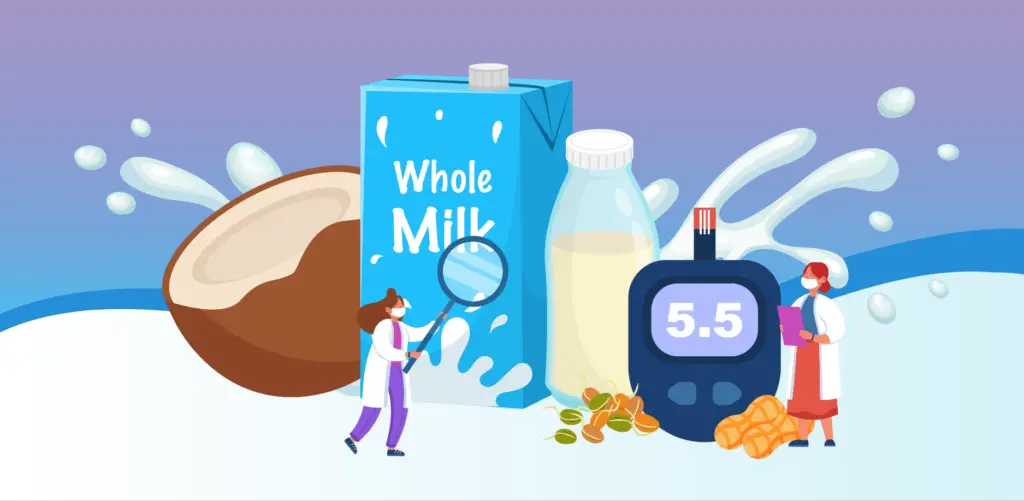
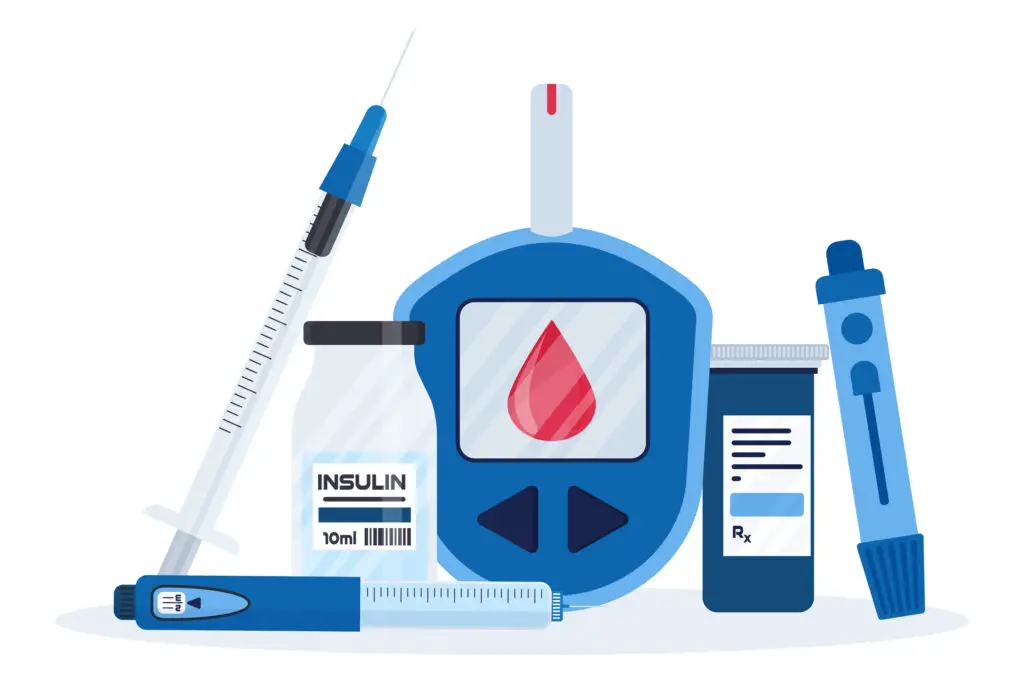
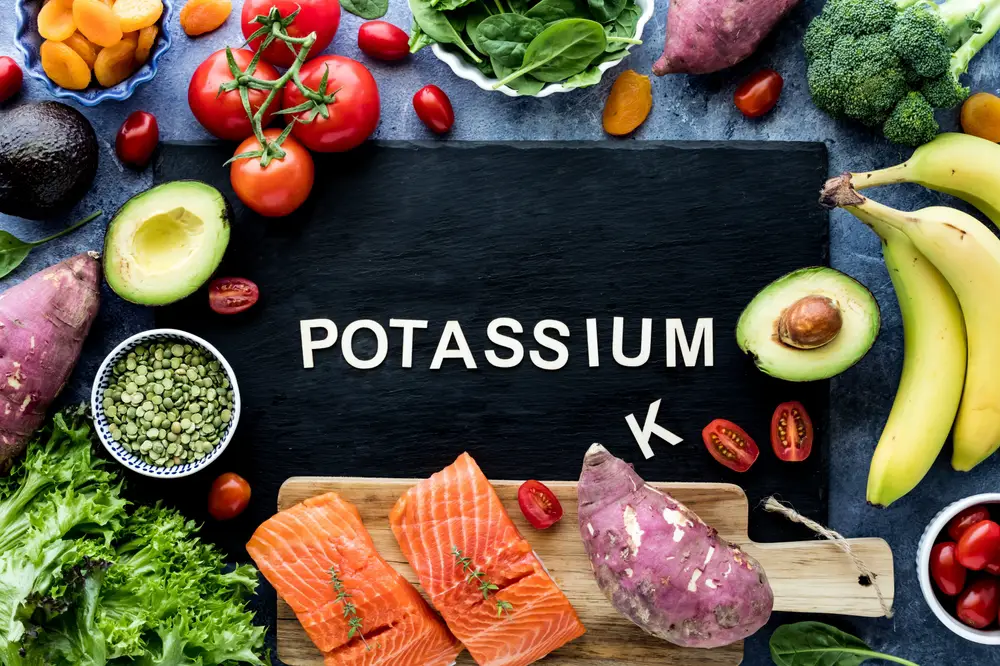
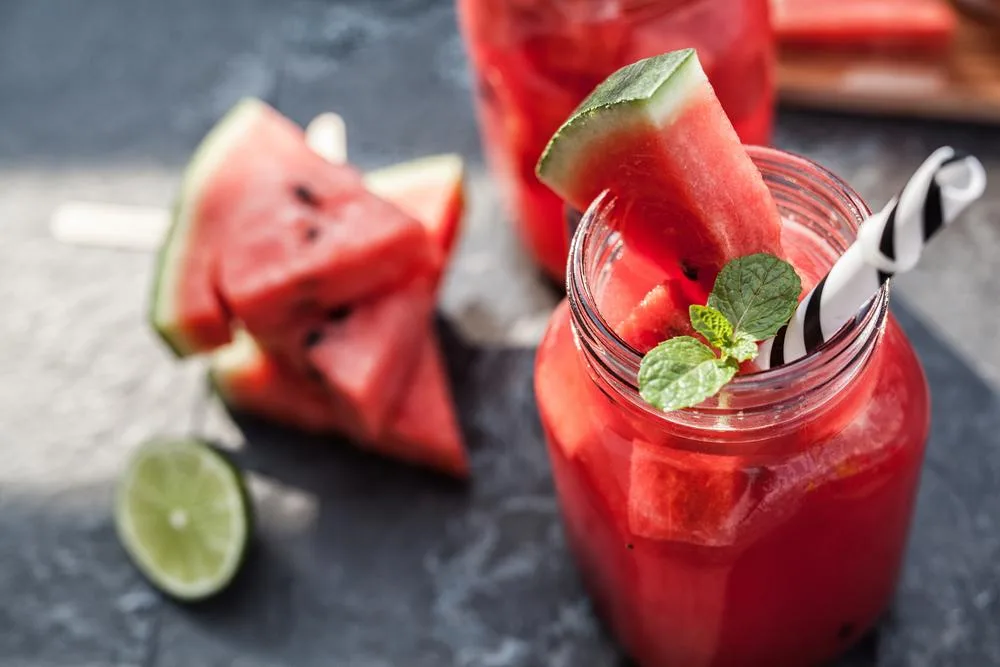
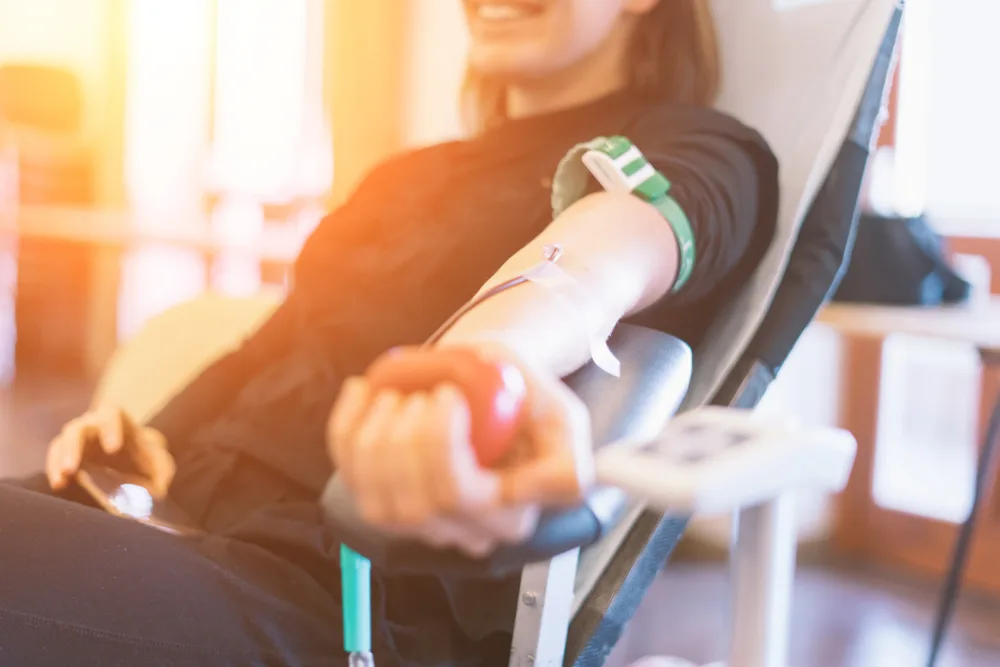
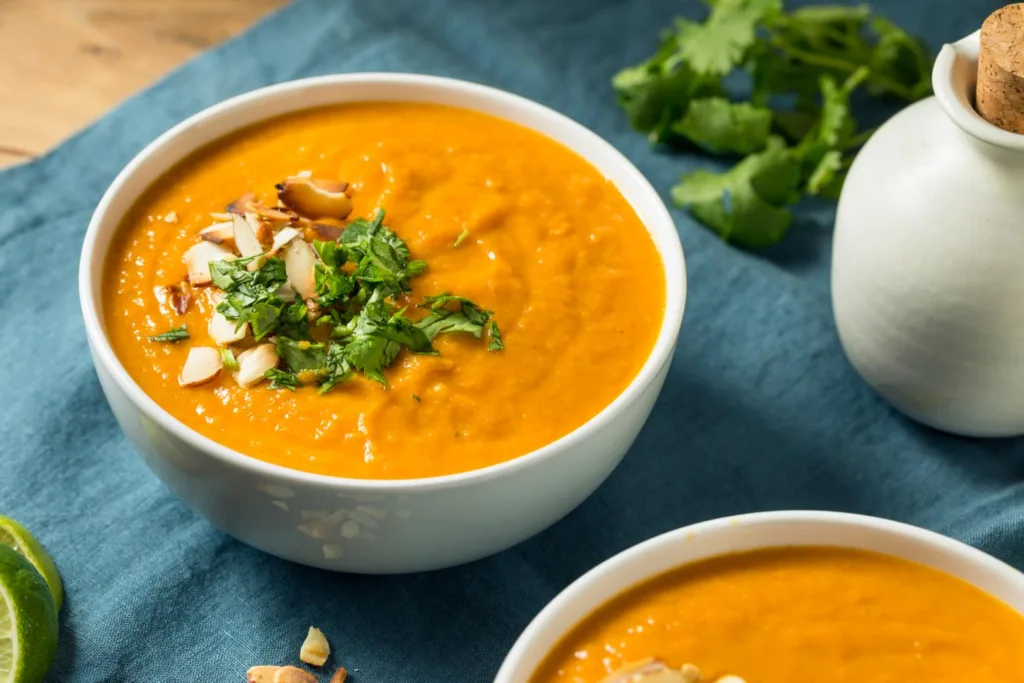



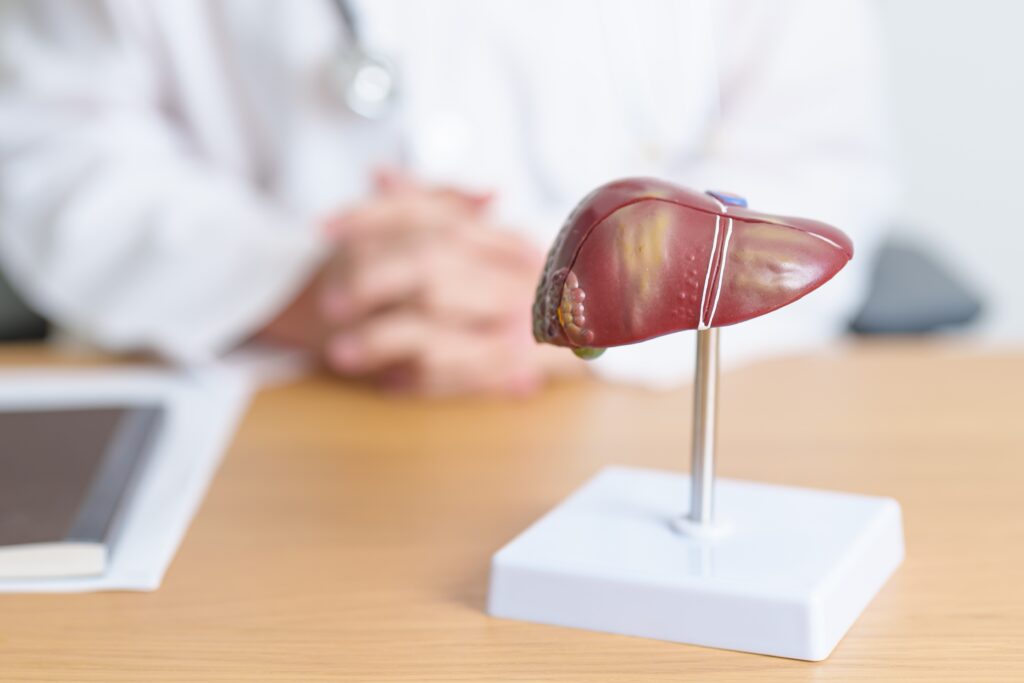


Comments
0